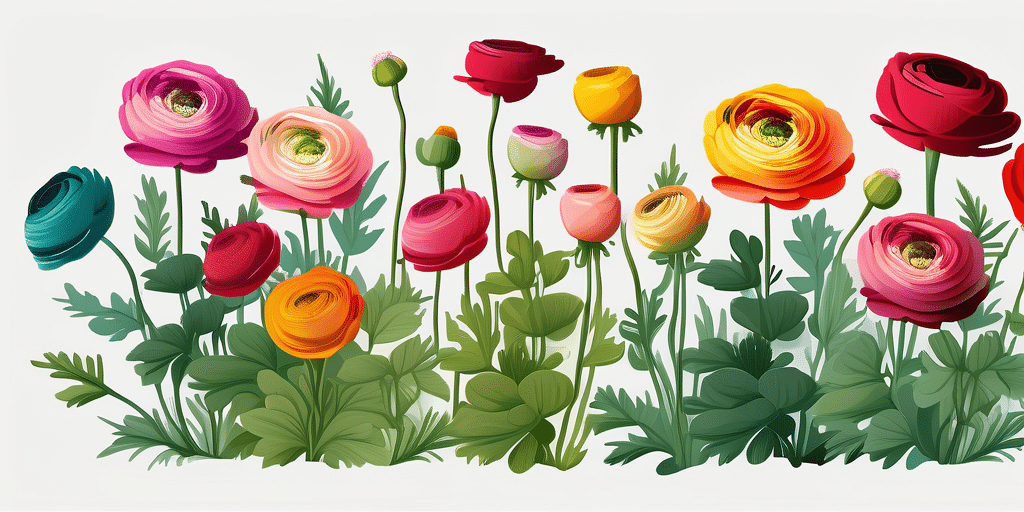Are you a gardening enthusiast living in Zone 6 and wondering when to plant ranunculus? Well, you’re in the right place. This comprehensive guide will provide you with all the information you need to successfully grow these beautiful blooms in your garden. Let’s dive in.
Understanding Ranunculus and Zone 6
Ranunculus, also known as buttercups, are popular flowers known for their vibrant colors and layered petals. They are a favorite among gardeners and florists alike due to their long-lasting blooms and wide range of colors.
Zone 6, as defined by the USDA Plant Hardiness Zone Map, includes regions where the average minimum winter temperature is between -10 to 0 degrees Fahrenheit. This zone covers parts of the Midwest, Northeast, and even some southern states. It’s crucial to understand your zone’s specific climate conditions to ensure successful growth of your ranunculus.
Why Ranunculus Thrive in Zone 6
Ranunculus are cool weather plants that prefer temperatures between 45-60 degrees Fahrenheit. This makes Zone 6 an ideal location for these flowers, as the spring and fall temperatures align perfectly with their preferences.
Additionally, the well-drained soil typically found in Zone 6 is another factor that contributes to the successful growth of ranunculus. These flowers do not fare well in waterlogged soil, so the relatively dry conditions of Zone 6 are beneficial.
When to Plant Ranunculus in Zone 6
The best time to plant ranunculus in Zone 6 is in early spring, as soon as the threat of frost has passed. This usually falls between late March and early April. Planting during this time allows the ranunculus to take advantage of the cool spring temperatures and ensures they will bloom in early summer.
However, if you want to enjoy these beautiful blooms in the fall, you can plant them in late summer, typically around August. Just make sure to keep an eye on the temperature, as ranunculus bulbs can rot in hot, humid conditions.
Step-by-Step Guide to Planting Ranunculus
- Choose a sunny location with well-drained soil.
- Prepare the soil by removing any weeds or rocks and adding compost or organic matter to improve drainage.
- Soak the ranunculus bulbs in water for 3-4 hours before planting.
- Plant the bulbs about 2 inches deep and 4-6 inches apart, with the clawed end facing downwards.
- Water the bulbs thoroughly after planting, but avoid overwatering as this can cause the bulbs to rot.
- Apply a layer of mulch to help retain moisture and control weeds.
- Expect to see sprouts in about 2-3 weeks.
Caring for Ranunculus in Zone 6
Once your ranunculus are planted, they require minimal care. However, there are a few key things to keep in mind to ensure they thrive.
Firstly, ranunculus need plenty of sunlight. Ensure they are planted in a location that receives at least six hours of direct sunlight each day. Secondly, while they need regular watering, be careful not to overwater as this can lead to bulb rot.
Feeding and Pruning
Ranunculus benefit from a balanced fertilizer applied every 2-3 weeks during the growing season. This will help promote healthy growth and abundant blooms.
Pruning is also essential for maintaining the health of your ranunculus. Deadhead spent flowers regularly to encourage more blooms and prevent the plant from wasting energy on seed production.
Common Problems and Solutions
Like any plant, ranunculus can encounter a few problems. However, with the right knowledge, these issues can be easily managed.
Pests and Diseases
Ranunculus are relatively resistant to pests and diseases. However, they can occasionally be affected by aphids, powdery mildew, and bulb rot. Regular inspection of your plants and prompt action at the first sign of trouble can help keep these issues at bay.
Overwatering
As mentioned earlier, overwatering is a common issue with ranunculus. If the leaves start to yellow or the plant appears wilted despite regular watering, you may be overwatering. Cut back on watering and ensure the soil is well-drained to resolve this issue.
Conclusion
With their vibrant colors and layered petals, ranunculus are a beautiful addition to any Zone 6 garden. By understanding the specific needs of these flowers and your zone’s climate conditions, you can enjoy these stunning blooms year after year. Happy gardening!
References:
- USDA Plant Hardiness Zone Map, USDA
- Ranunculus Production Guide, Clemson University
- Buttercup, Britannica
Join the How to Grow Everything Community
Ready to take your gardening skills to the next level? Subscribe for free to How to Grow Everything and learn how to build the garden of your dreams! Receive personalized advice and information tailored to your Zone 6 climate, experience level, and interests. Enjoy the best gardening tips, special offers, and deals delivered straight to your inbox – with no spam, just valuable insights. Join our family of gardening enthusiasts and transform your ranunculus garden into a vibrant showcase. 100% free, because we grow better together!
